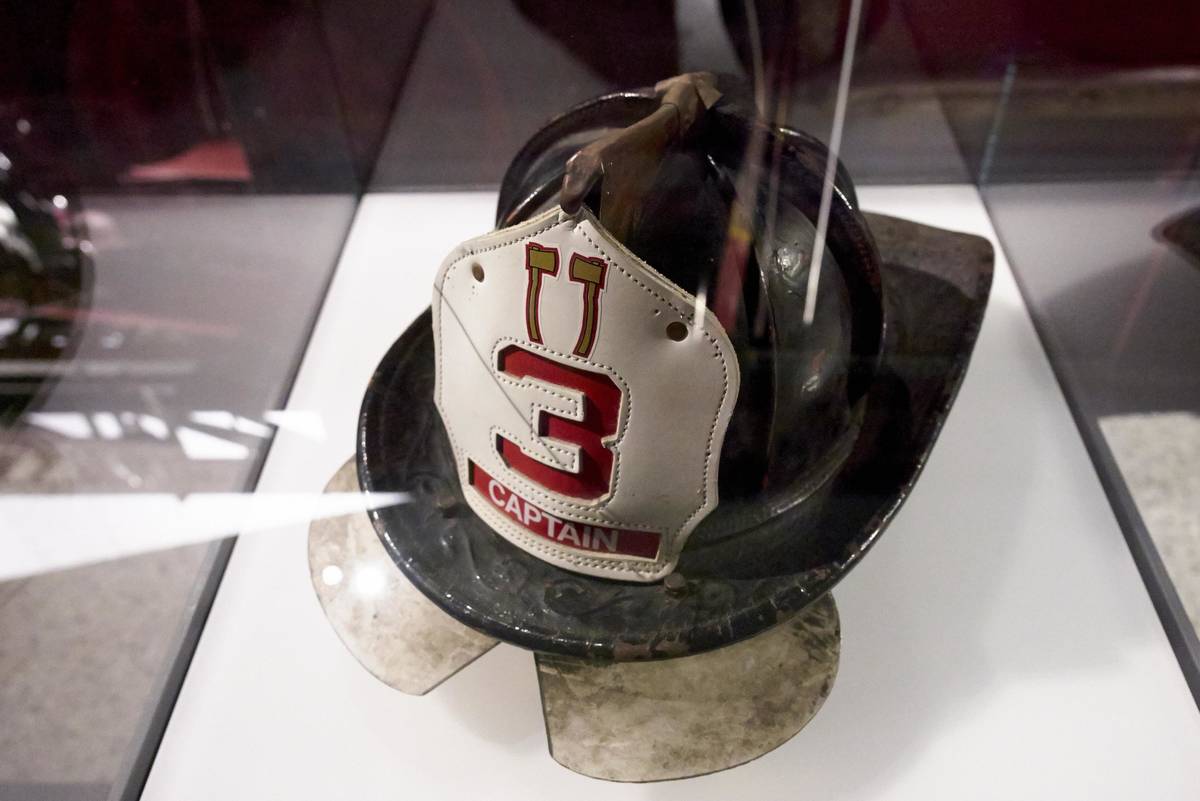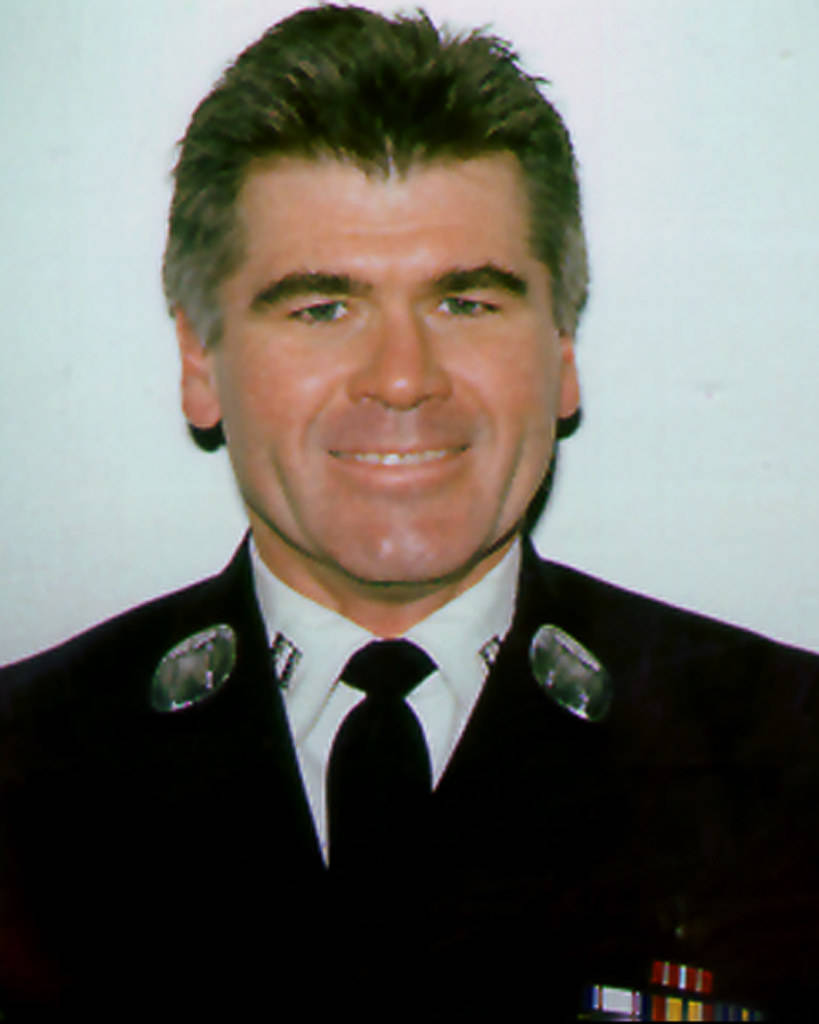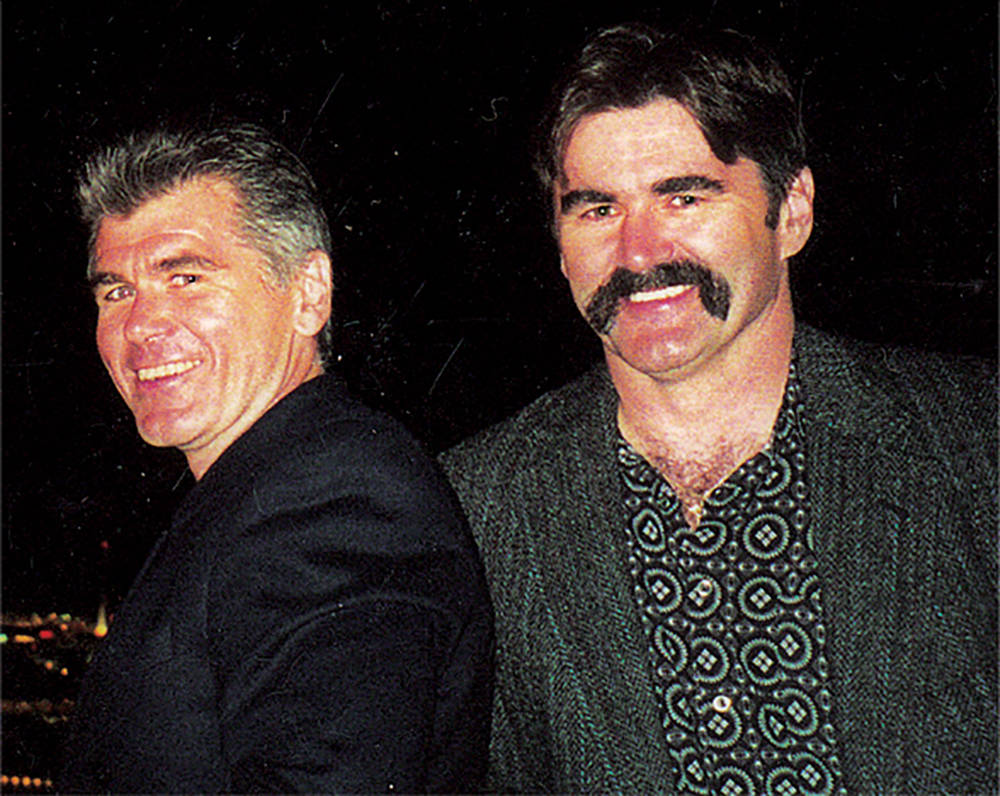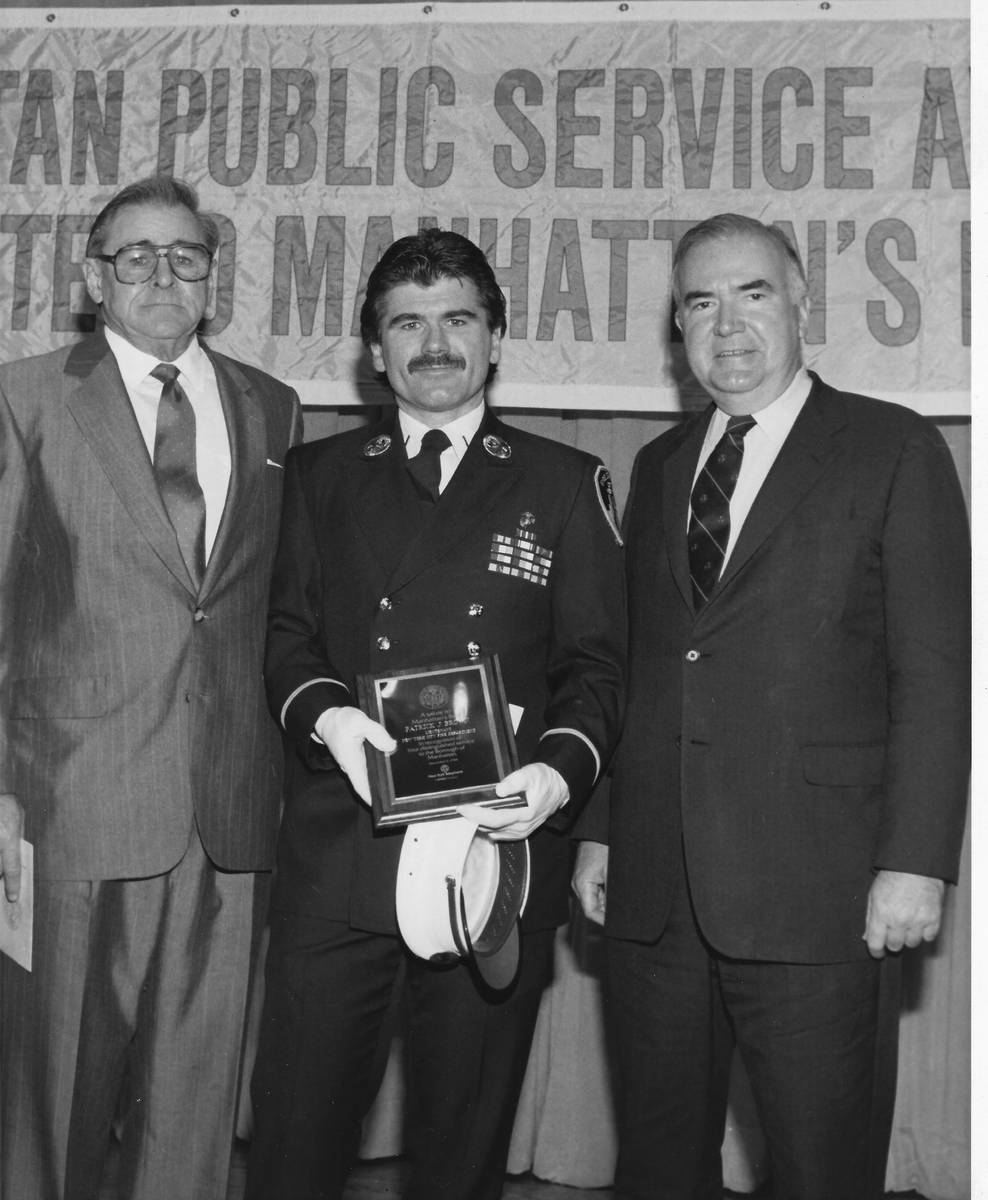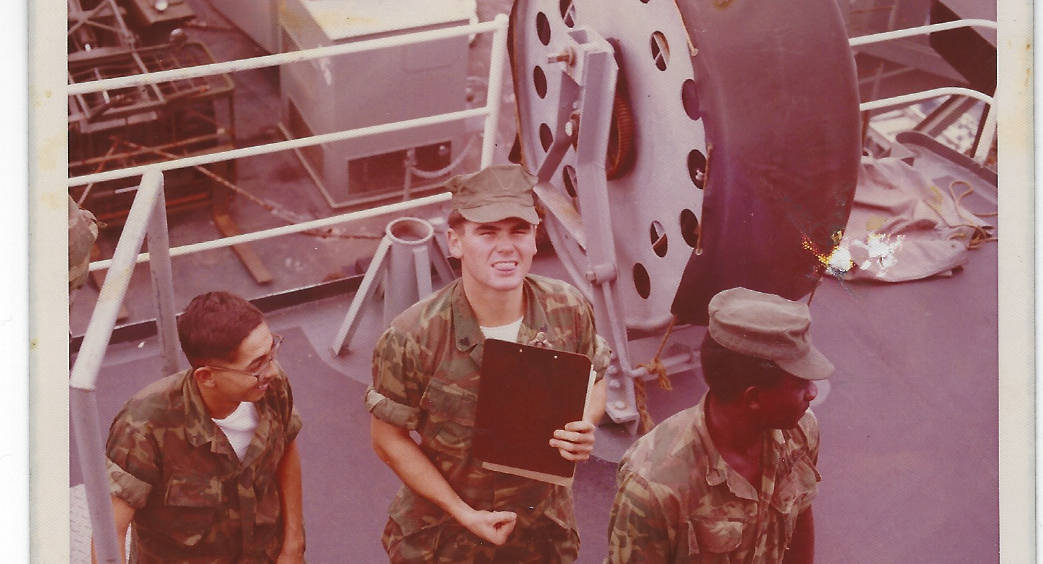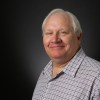Las Vegas doctor’s book recalls search for firefighter brother after 9/11
On the morning of Sept. 11, 2001, Las Vegas emergency medicine physician Dr. Michael Everett Brown was working a fairly typical 6 a.m. shift at Sunrise Hospital and Medical Center.
On the other side of the country, Michael’s older brother, Patrick, was climbing stairs higher and higher into the smoke-filled, doomed North Tower of the World Trade Center.
Capt. Patrick “Paddy” Brown was one of the New York City Fire Department’s most decorated firefighters and a legend among his colleagues. Michael’s repeated, increasingly worried calls to Patrick — and to family members, friends and colleagues back East — wouldn’t connect or yielded no information, but he knew that Patrick had to be in one of the towers.
So, when Patrick went missing at the pile of rubble and dust that had been the World Trade Center, Michael did what any brother would do: “Pat, I’m coming for you.”
Michael chronicles that journey in “What Brothers Do: A Personal Story of Love, Loss and Loyalty in the Aftermath of 9/11,” (Virtualbookworm.com Publishing, $19.95), a memoir published almost 10 years ago, which has been updated and relaunched. He is donating proceeds from the book’s sale to the Stephen Siller Tunnel to Towers Foundation, named after another New York City firefighter who died in the World Trade Center attacks.
“What Brothers Do” is a tribute to his brother and to heroism, service and sacrifice. But it’s also a tribute to family and to Michael, who now is battling cancer linked to his time at ground zero during the recovery effort. (Because of the intensive treatment he’s undergoing, Michael Brown was unavailable to be interviewed.)
Burning towers, flying debris
The two brothers grew up in Queens, New York. Patrick joined the Marines at 17 and, after a rough initial patch, excelled, becoming a decorated sergeant who served in Vietnam. In 1977, he achieved a lifelong dream and joined the New York City Fire Department.
Michael followed his brother into the department, serving for four years at Engine Company 37 in Harlem. Then he attended medical school, became a physician and moved to Las Vegas, where he is an emergency medicine doctor and a member of the Nevada Task Force One Urban Search and Rescue Team.
As he worked in Sunrise hospital’s ER that morning when terrorists flew hijacked commercial airliners into the twin towers, Michael tended to patients even as he worried about Patrick.
He saw a patient with a gunshot wound, another patient in labor and a methamphetamine user. In between, he glanced at hospital TVs, hoping to catch a glimpse of Patrick alive and well. But, he writes, the screens showed “images of both towers burning, debris flying and people hurling themselves out of windows, preferring death from the impact of an 80-story fall to death from the ever-intensifying flames and fumes.”
He decided then to go to New York City and find his brother. With no flights available, he and three colleagues drove cross-country in Michael’s pickup, covering 2,600 miles in 45 sleepless hours.
Michael’s search would be literal and metaphorical, as he reconnected with his brother, largely through the memories and recollections of Patrick’s fellow firefighters, friends and even strangers whose paths had crossed his.
‘Bravest of the brave’
“Patrick was a legend fireman in the New York City Fire Department,” says Tim Brown, who is not related to Patrick and Michael. The retired New York City Fire Department firefighter was one of Patrick’s best friends.
During his career, Patrick appeared in newspapers and on TV numerous times, receiving many commendations and medals for rescues. His helmet, recovered from ground zero, has been displayed at the National September 11 Memorial Museum.
“We would wear our ribbons on the left breast of our dress uniform, and Patrick had so many more of them than anyone else he’d leave most of them in a dresser drawer at home because he didn’t want to embarrass the other guys,” Tim Brown says. “His reputation in the New York City Fire Department was as the bravest of the brave.”
Patrick also was mysterious, his friend says: “He was a guy who compartmentalized different parts of his life.”
Even Patrick’s own men — to whom he held a fierce loyalty that was returned in kind — may not have known that he was into yoga, had a black belt in karate, ran marathons, had a deep spiritual side or even that he had a grand piano in his apartment.
At Patrick’s wake, “I’m not exaggerating, there were more than 100 people waiting in line to pay their respects,” Tim Brown says. “There was a bunch of young kids who formed a line and there was an older person in front of the line. These children were probably 10 to 18. … All of these kids were blind and they wanted to say goodbye to their friend Patrick. Patrick thought that, while he could teach blind kids karate, they could teach him how to operate without having his vision because, as a firefighter, you operate in smoke.
“That was Patrick. He was a deep thinker. A quiet, humble American hero. A U.S. Marine sergeant in Vietnam. And even to his best friends he didn’t talk about other aspects of his life.”
Last words
When Michael arrived in New York City and made his way to Ladder 3, the company where his brother was captain, he didn’t know that Patrick and his men had been rescuing people in the North Tower on Sept. 11. A recording of a call Patrick made to a 911 dispatcher from a pay phone includes what probably are among Patrick’s last words:
“ … I’m on the 35th floor, OK? Just relay to the command post we’re trying to get up. There’s numerous civilians at all stairwells, numerous burn injuries are coming down. I’m trying to send them down first. Apparently it’s above the 75th floor. I don’t know if they got there yet, OK? 3 Truck and we are still heading up, all right? Thank you.”
At Ladder 3, Michael met the men who would become his other brothers, whom he credits with helping him cope with the loss of Patrick.
“Patrick was kind of the patriarch of that firehouse and (was) loved by all, so they all immediately welcomed Mike,” Tim Brown says. “When Mike walked in the door, everyone about had heart attacks. They thought it was Patrick.”
‘God Bless Paddy Brown’
On Nov. 9, 2001 — what would have been Patrick’s 49th birthday — a memorial service was held for him at St. Patrick’s Cathedral. Thousands attended. As he grieved, Michael continually was surprised to hear others’ stories about his brother’s impact on their lives, such as saving one woman from an assault, or spending time with a starstruck neighborhood kid, or helping a big-name actor in Alcoholics Anonymous through a rough patch.
“ ‘If it weren’t for Paddy Brown, I would be dead.’ I would hear this recurring theme from so many people from all walks of life,” Michael writes.
After Patrick’s remains were recovered from ground zero in December 2001, family and friends conducted a smaller service. Michael and a group of friends scattered his brother’s ashes in Central Park, where several weeks earlier they had, under cover of night, planted a tree for Patrick.
They cast Patrick’s ashes into the air, sending them off with wishes of “God Bless Paddy Brown,” Michael writes, and a “magnificent cloud of what had once been Pat’s bones, muscle and heart took flight and swirled magically toward the moon and over his city.”
Coping with the fallout
The book chronicles the aftermath of Michael’s search, including how his brother’s legion of friends and colleagues helped him through his grief and how he came to terms with his altered life and the challenges it has brought.
Since the book’s publication almost a decade ago, Michael’s wife, Janet, died of breast cancer, and Michael now is fighting bone cancer linked to his time at ground zero.
(The federal government’s World Trade Center Health Program, through which Michael is being treated, offers care to people directly affected by the attacks and has certified more than a dozen cancers as being linked to the site. As of late June, 79,001 first responders and 26,271 survivors were enrolled in the program.)
Tim Brown considers Michael’s book “incredible.” And while it’s a story of two brothers, it’s also “the story of what happened to us,” he says. “Patrick represents 343 other New York City firefighters who did the same thing Patrick did.
“You never met someone so bold, so courageous, so humble and so kind and caring as Capt. Patrick Brown. And I think Mike did his best to capture all of that.”
In the final pages of his memoir, Michael says, “I started out writing a story about pain and ended up writing a story about love.”
Contact John Przybys at jprzybys@reviewjournal.com. Follow @JJPrzybys on Twitter.
To learn more
For more information about the Sept. 11 World Trade Center attacks, visit the National September 11 Memorial Museum's website (911memorial.org) Among the site's offerings is a minute-by-minute timeline of events leading up to the attacks.
For more information about "What Brothers Do," visit whatbrothersdo.com.



